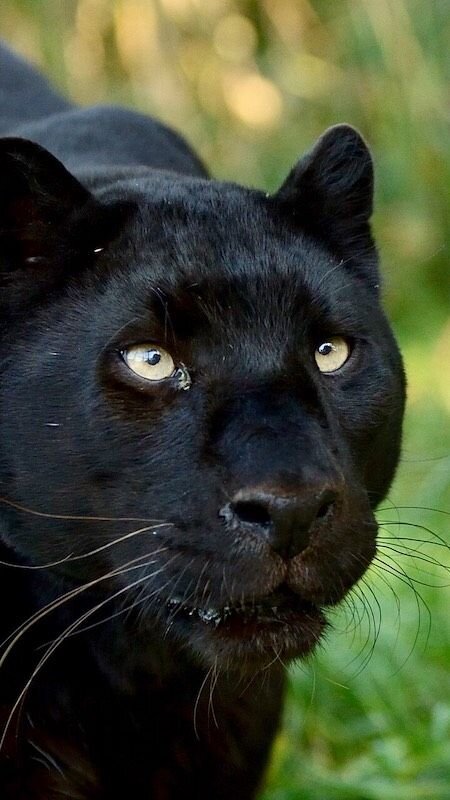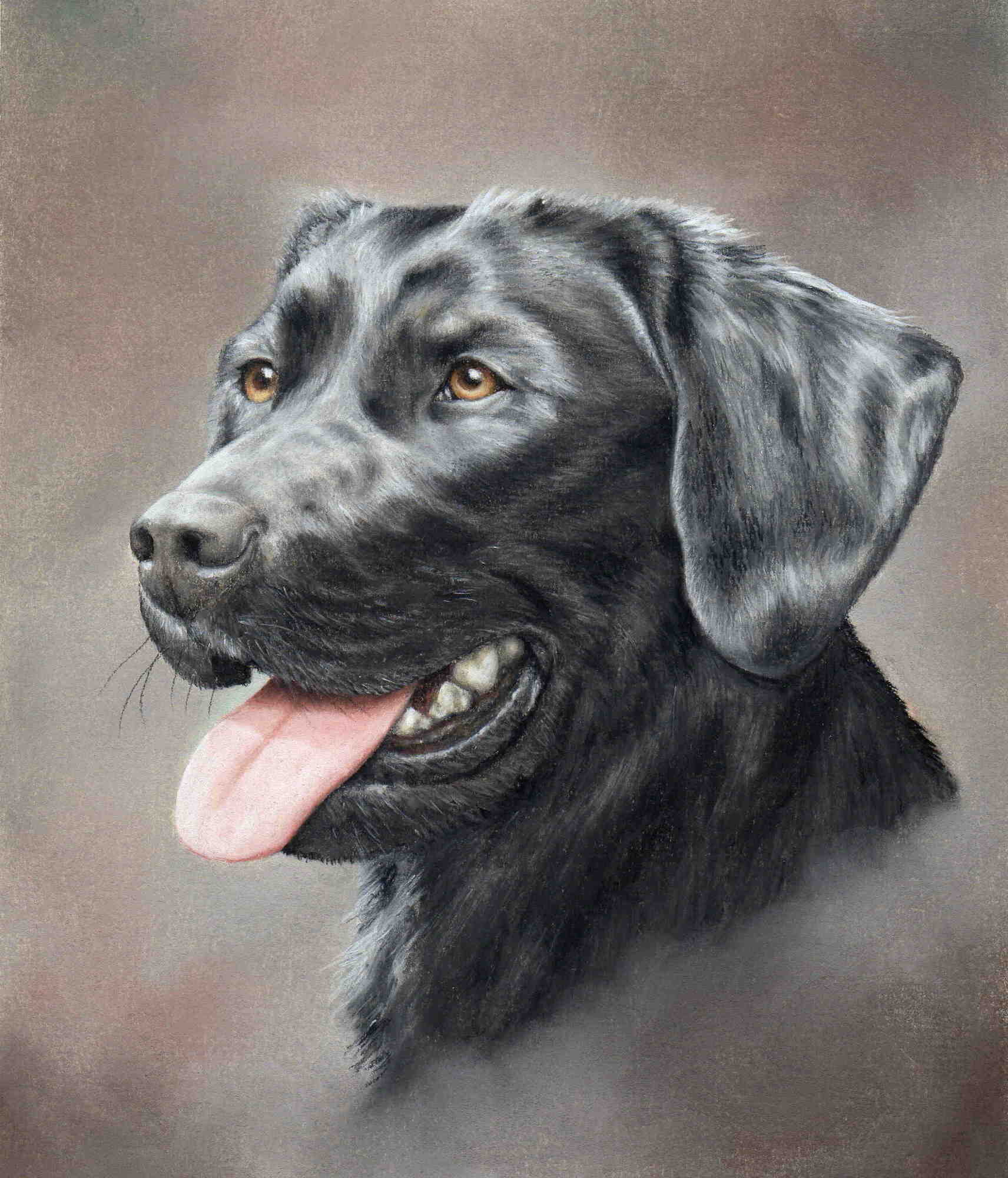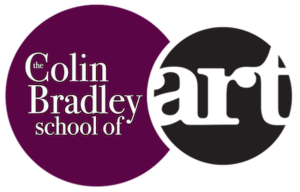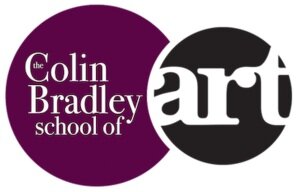Tips for Drawing Black Animals
Kimberley sent in a picture of a Black Panther that she wants to draw using Pastel Pencils. In this recording and blog post Colin gives advice on the kind of colours that would be needed and for black fur in general. Kimberley is a member of our website and so can send in her photographs for advice on pencils to use. To learn more about becoming a member click here.Here's Kimberley's picture that she would like to do: To listen to the recording click the play button below. We have also transcribed the recording if you would like to read the advice:Stephen Bradley: Hi Kimberley thanks for sending your e-mail over you want to do the Black Panther picture that we've got on this blog post and you would like to know what colours that you need to draw the picture. So Dad this is a really dark animal - Black Panther is really impressive. It's a lovely photo. Can you give a rough rough idea of what colours you would use? Colin Bradley: Certainly, yes, well if we split it into two you've got the light and the dark. Just imagine you've got those light shines and you've got the dark. If we start with the dark you would start with a colour like 233 which is a mid Grey never start with a dark colour on a picture like this because what you've got to do is you've get a good grounding. If you start with a dark colour like 181 and black that's okay but it becomes too intense. What you've got to do is build up the base first and you can't build it up with very light grey - that's daft. If you've got a very dark colour you want, you don't start with a 230 for instance or worse still a white you'd never get the depth of colour but if you start with the 233 and that's the Mid tone Grey and it's a blue grey. Whenever you look at a photograph it either goes warm or it goes cool.Now anything cool has got that Bluey hue. Anything warm has got that earthy tone. In this particular case the picture you've got there is most certainly a bluey cool tone so therefore you want the blue tones. Now if we're sticking to Faber Castell Pitt Pastel Pencils for the moment because it's a little bit easier 233 is the first colour. Now the second colour you put on there would be a 181. Now that is quite an intense colour. But it goes onto the 233 really well and you'll find that will give you the depth. But the other colour that I would use in that particular case on top of the 181 is 157 now 157 is like a midnight blue I think it's a cobalt blue but anyway it's a midnight blue I think of it as that way.Now that put on top of that would give you that bluish hue. On top of that would go the black. Now you may have other colours you might use but those are the base colours that I would use on that particular one. Now if we down go to the light colours remember it's not light and dark. It's light transitioning to dark. You've got to be careful there. So when you get a situation where you've got a light shine and you've got a dark intense colour you have the 233 slightly moving into the lighter tone and 230 moving into the darker tone. Now you might think well why can't I put white on? I wouldn't put white on at this stage especially in that very very dark animal unless you've got a really sharp light and sometimes you can on a black animal if the light is hitting it. But that particular one hasn't got that really intense light so therefore I'd start with 230. So you've got 230 and 233 and where they kind of mix together where you get the light and dark mixing together on the finished picture or finished photograph you're looking at you transition those two so they start melting together.Once you've done that you can then use the 233 on top of the 230 being a bit careful but that then starts to tone down that light that you've got there. Now when you work those two colours you got - I've given you all the dark colours now you've got the lighter colours you could find you can also put say the 181 brushed over that 230/233 under colour. It could brush over it - I don't mean paint brush I mean just lightly draw it in.
To listen to the recording click the play button below. We have also transcribed the recording if you would like to read the advice:Stephen Bradley: Hi Kimberley thanks for sending your e-mail over you want to do the Black Panther picture that we've got on this blog post and you would like to know what colours that you need to draw the picture. So Dad this is a really dark animal - Black Panther is really impressive. It's a lovely photo. Can you give a rough rough idea of what colours you would use? Colin Bradley: Certainly, yes, well if we split it into two you've got the light and the dark. Just imagine you've got those light shines and you've got the dark. If we start with the dark you would start with a colour like 233 which is a mid Grey never start with a dark colour on a picture like this because what you've got to do is you've get a good grounding. If you start with a dark colour like 181 and black that's okay but it becomes too intense. What you've got to do is build up the base first and you can't build it up with very light grey - that's daft. If you've got a very dark colour you want, you don't start with a 230 for instance or worse still a white you'd never get the depth of colour but if you start with the 233 and that's the Mid tone Grey and it's a blue grey. Whenever you look at a photograph it either goes warm or it goes cool.Now anything cool has got that Bluey hue. Anything warm has got that earthy tone. In this particular case the picture you've got there is most certainly a bluey cool tone so therefore you want the blue tones. Now if we're sticking to Faber Castell Pitt Pastel Pencils for the moment because it's a little bit easier 233 is the first colour. Now the second colour you put on there would be a 181. Now that is quite an intense colour. But it goes onto the 233 really well and you'll find that will give you the depth. But the other colour that I would use in that particular case on top of the 181 is 157 now 157 is like a midnight blue I think it's a cobalt blue but anyway it's a midnight blue I think of it as that way.Now that put on top of that would give you that bluish hue. On top of that would go the black. Now you may have other colours you might use but those are the base colours that I would use on that particular one. Now if we down go to the light colours remember it's not light and dark. It's light transitioning to dark. You've got to be careful there. So when you get a situation where you've got a light shine and you've got a dark intense colour you have the 233 slightly moving into the lighter tone and 230 moving into the darker tone. Now you might think well why can't I put white on? I wouldn't put white on at this stage especially in that very very dark animal unless you've got a really sharp light and sometimes you can on a black animal if the light is hitting it. But that particular one hasn't got that really intense light so therefore I'd start with 230. So you've got 230 and 233 and where they kind of mix together where you get the light and dark mixing together on the finished picture or finished photograph you're looking at you transition those two so they start melting together.Once you've done that you can then use the 233 on top of the 230 being a bit careful but that then starts to tone down that light that you've got there. Now when you work those two colours you got - I've given you all the dark colours now you've got the lighter colours you could find you can also put say the 181 brushed over that 230/233 under colour. It could brush over it - I don't mean paint brush I mean just lightly draw it in. I've done quite a few pictures like that so you can probably see if you look back on pictures that I've done and see how I've actually done that because you've got those light undertones, 181 (as long as you go don't press hard) will give you again a darker tone. Now once that's done you then can use if you wish to a white pencil again dragged across that and that will give you the effects you've got there. Now I'm making that sound really easy but I've got to tell you it's really hard. Anything Black is the most difficult thing to do and what I would do if I was Kimberley is do it on spare paper first. What I've just told you to do - Dark and Light. And see how you can get those two, you will eventually if you keep practicing, get those transitions before you actually start it on the actual animal. Nothing worse than starting an animal and think "Now what did Colin say?" because it is too late really. You've got to have it kind of in your head and practice just before you actually put pencils to paper.Stephen Bradley: There's a picture on the website that could really help with this technique and that's a black cat. So if people wanted to see a demonstration of some of what you're saying and see the techniques applied and it's a cat as well in that feline race they can have a look at that video.
I've done quite a few pictures like that so you can probably see if you look back on pictures that I've done and see how I've actually done that because you've got those light undertones, 181 (as long as you go don't press hard) will give you again a darker tone. Now once that's done you then can use if you wish to a white pencil again dragged across that and that will give you the effects you've got there. Now I'm making that sound really easy but I've got to tell you it's really hard. Anything Black is the most difficult thing to do and what I would do if I was Kimberley is do it on spare paper first. What I've just told you to do - Dark and Light. And see how you can get those two, you will eventually if you keep practicing, get those transitions before you actually start it on the actual animal. Nothing worse than starting an animal and think "Now what did Colin say?" because it is too late really. You've got to have it kind of in your head and practice just before you actually put pencils to paper.Stephen Bradley: There's a picture on the website that could really help with this technique and that's a black cat. So if people wanted to see a demonstration of some of what you're saying and see the techniques applied and it's a cat as well in that feline race they can have a look at that video. Colin Bradley: Another another picture is the Black Labrador. That's another one that is good just to check up on. Anything that's got that black colour especially all over. Not like the black and white spaniel you've got white and dark you've got a very distinct difference there although the black would help but the solid black animal is an ideal place to start. But it's really hard, I think wasn't it something to do with the eyes...Stephen Bradley: Well I mean it's colours for the picture itself so let's have the colour for the eye...Colin Bradley: In this case I would start with white. I'd always start with white and then I would use ivory just a little on it and I would use a Grey. Now the grey here I would use would be 270. Now that is an earthy colour. You could use 230 but I would think the 270 if you've got it is a more earthy colour and that can go in as well. Then you can find you'll get that colour that you've got there. Then you'll need to add colours. Now I can't tell you what colours though, possibly a little ochre could be a little bit grey on it as well? But you've got to keep it light because that's where you get the contrast between the eye and the black fur surrounding it.Stephen Bradley: OK that's great. What kind of background would you put on that? Colin Bradley: I would go for a jungle green colour, greyish green if you can put it whenever you put green on put Grey in as well.Stephen Bradley: So similar to the picture?Colin Bradley: Well actually yes, if you look at the picture you've got a greenish greyish. I wouldn't particularly worry about the lighter colours there. If you look at the ear it looks like greenish grey doesn't it. But if you go right down to the bottom of that picture it's more bluish green. It will still work because you've got the cooler colours in the animal. But I'd use a greyish green. The problem with all backgrounds is that it's got to compliment the animal and it's got to be lighter as well. It's got to be light to mid tone, you couldn't make it too light because it would clash with the animal. That colour you've got there is absolutely ideal.Stephen Bradley: Great. OK. Thanks Kimberley. I hope that's proved useful for you and other people also listening to this and we'll see you next time for some advice.
Colin Bradley: Another another picture is the Black Labrador. That's another one that is good just to check up on. Anything that's got that black colour especially all over. Not like the black and white spaniel you've got white and dark you've got a very distinct difference there although the black would help but the solid black animal is an ideal place to start. But it's really hard, I think wasn't it something to do with the eyes...Stephen Bradley: Well I mean it's colours for the picture itself so let's have the colour for the eye...Colin Bradley: In this case I would start with white. I'd always start with white and then I would use ivory just a little on it and I would use a Grey. Now the grey here I would use would be 270. Now that is an earthy colour. You could use 230 but I would think the 270 if you've got it is a more earthy colour and that can go in as well. Then you can find you'll get that colour that you've got there. Then you'll need to add colours. Now I can't tell you what colours though, possibly a little ochre could be a little bit grey on it as well? But you've got to keep it light because that's where you get the contrast between the eye and the black fur surrounding it.Stephen Bradley: OK that's great. What kind of background would you put on that? Colin Bradley: I would go for a jungle green colour, greyish green if you can put it whenever you put green on put Grey in as well.Stephen Bradley: So similar to the picture?Colin Bradley: Well actually yes, if you look at the picture you've got a greenish greyish. I wouldn't particularly worry about the lighter colours there. If you look at the ear it looks like greenish grey doesn't it. But if you go right down to the bottom of that picture it's more bluish green. It will still work because you've got the cooler colours in the animal. But I'd use a greyish green. The problem with all backgrounds is that it's got to compliment the animal and it's got to be lighter as well. It's got to be light to mid tone, you couldn't make it too light because it would clash with the animal. That colour you've got there is absolutely ideal.Stephen Bradley: Great. OK. Thanks Kimberley. I hope that's proved useful for you and other people also listening to this and we'll see you next time for some advice.

